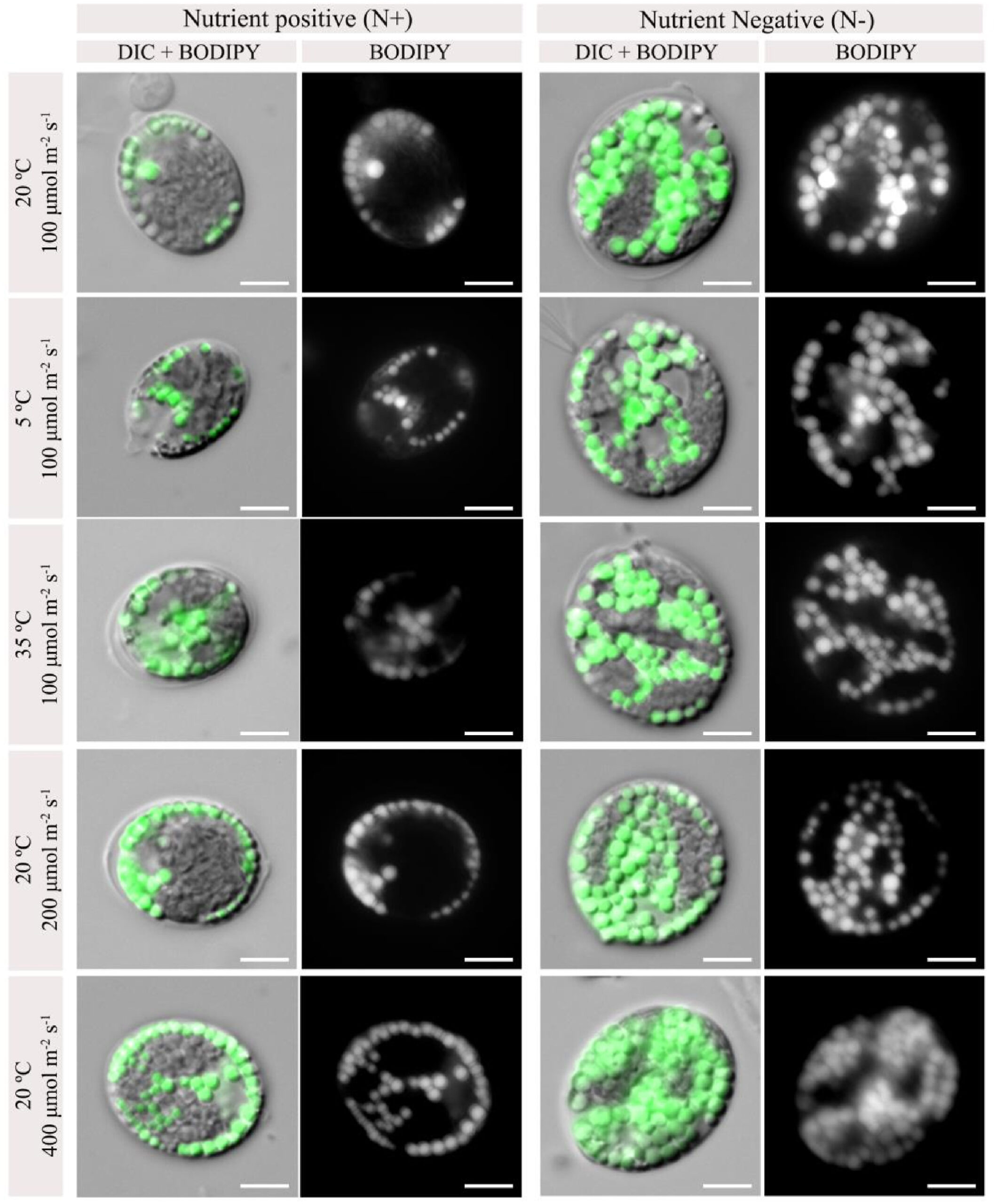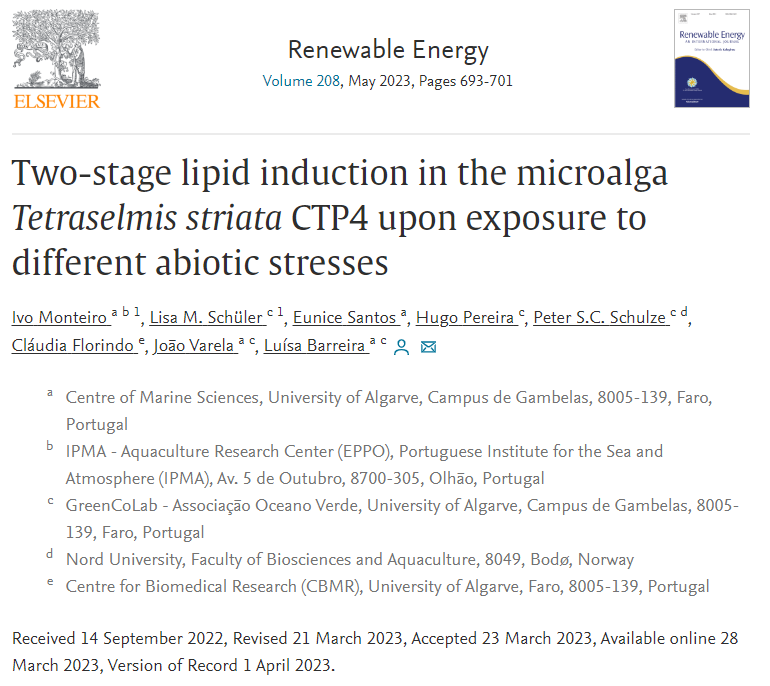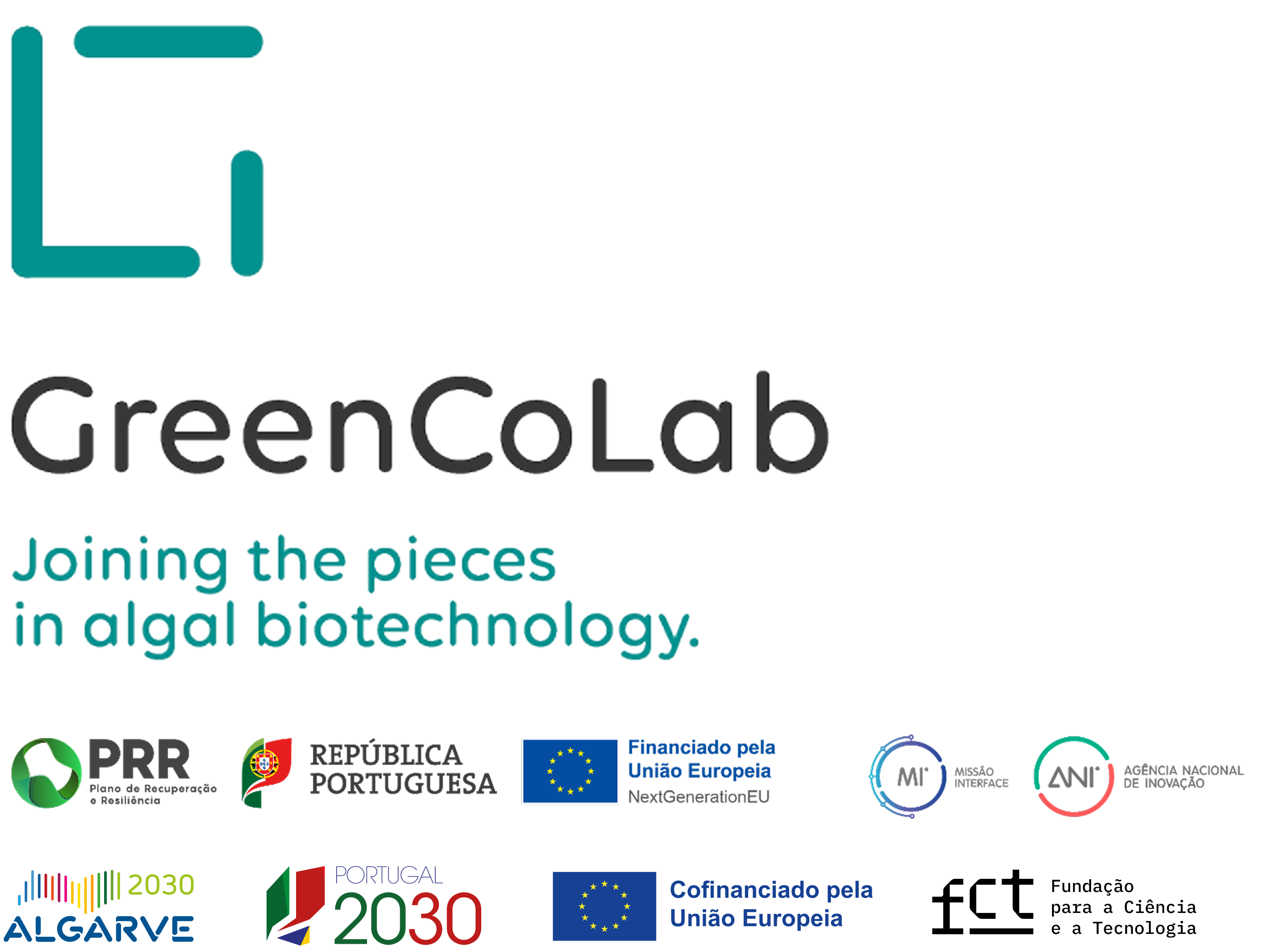

TITLE
Two-stage lipid induction in the microalga Tetraselmis striata CTP4 upon exposure to different abiotic stresses
JOURNAL
Renewable Energy
AUTHORS
Ivo Monteiro, Lisa M. Schüler, Eunice Santos, Hugo Pereira, Peter S.C. Schulze, Cláudia Florindo, João Varela, Luísa Barreira
ABSTRACT
Tetraselmis striata CTP4 is a euryhaline, robust, fast-growing microalga suitable for wastewater treatment and industrial production. Lipid production was induced through a two-stage cultivation strategy: a 1st stage under standard growth-promoting conditions (100 μmol photons m−2 s−1, salinity 36 ppt and 20 °C) to achieve high biomass concentration and a 2nd stage of 6 days for lipid induction by the application of abiotic stresses such as nutrient depletion, high light intensity (200 and 400 μmol photons m−2 s−1), high salinity (75 and 100 ppt), and extreme temperatures (5 and 35 °C). Although nutrient depletion always resulted in a decrease in biomass productivity, it had also the highest impact on lipid induction. The highest lipid content (43.2%) and lipid productivity (29.2 mg L−1 d−1) were obtained using a combination of nutrient depletion and high light intensity (400 μmol m−2 s−1). The fatty acid profile was mainly composed of C16:0 (palmitic), C18:1 (oleic) and C18:2 (linoleic) acids. The low content of unsaturated fatty acids and absence of C18:3 (linolenic) acid render the oil of this microalga suitable for biodiesel production, a renewable source of energy.



